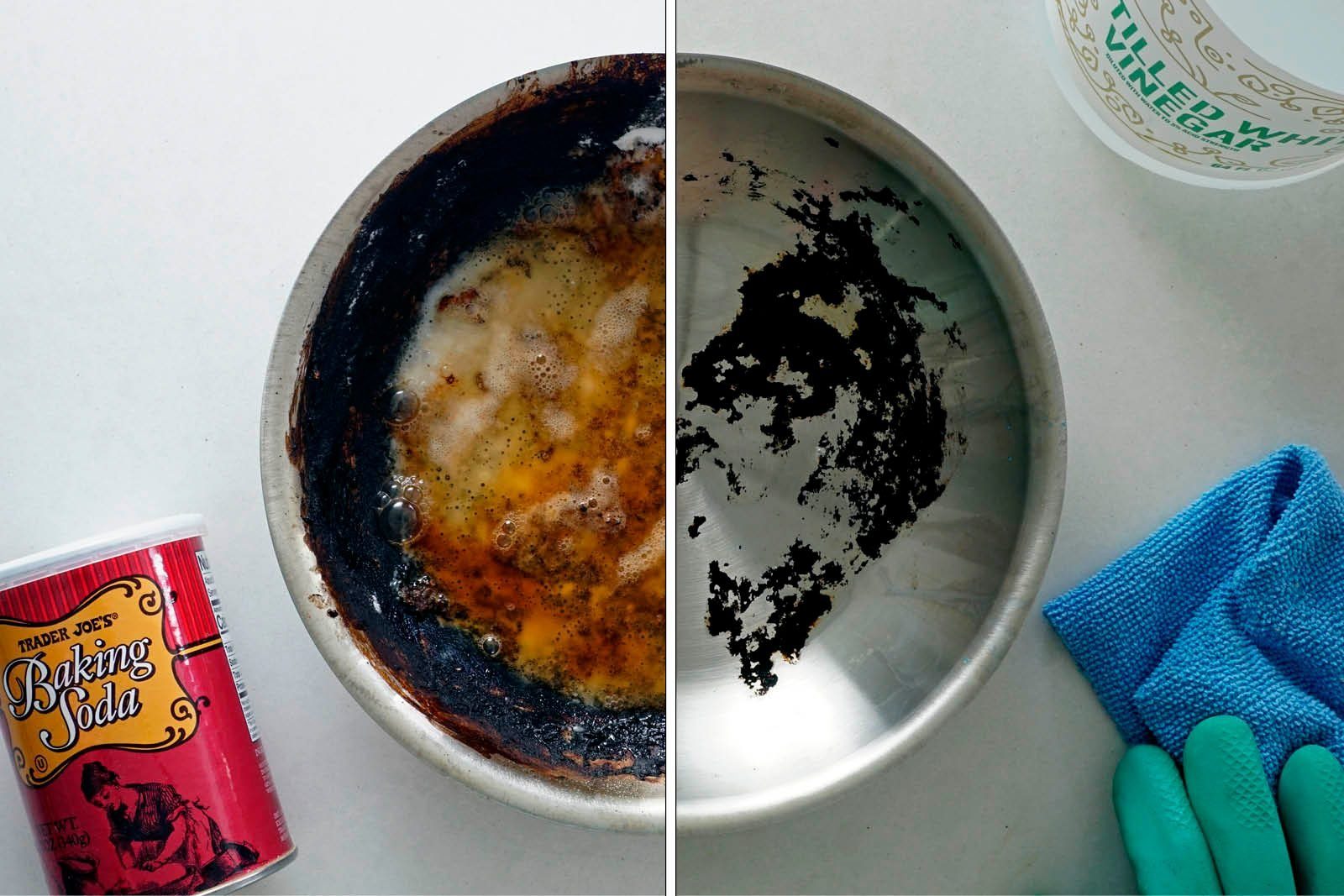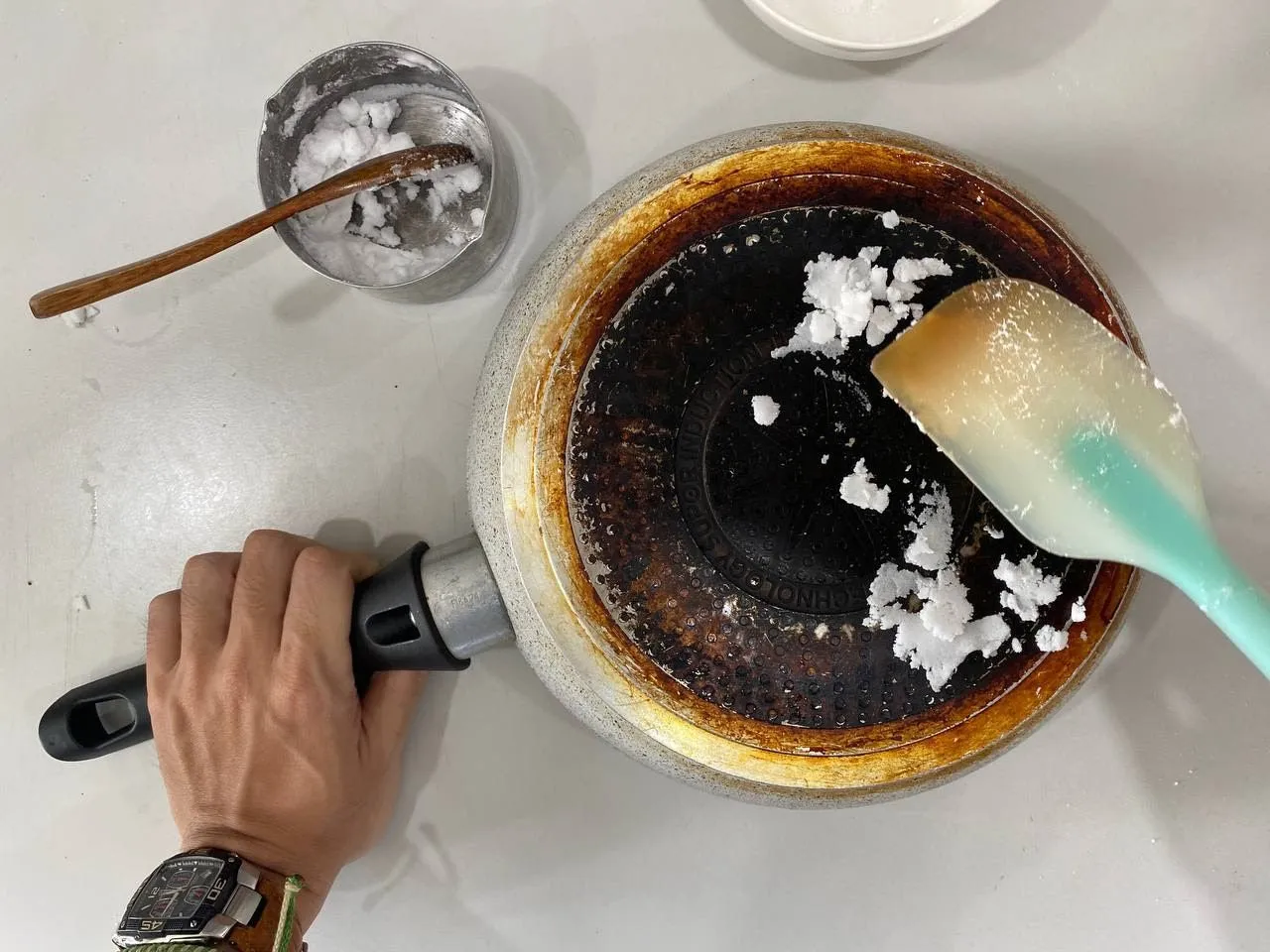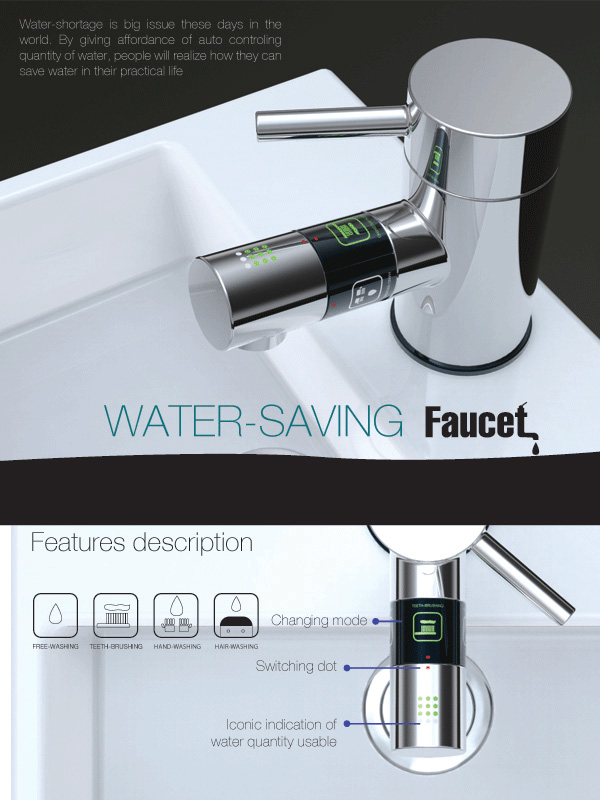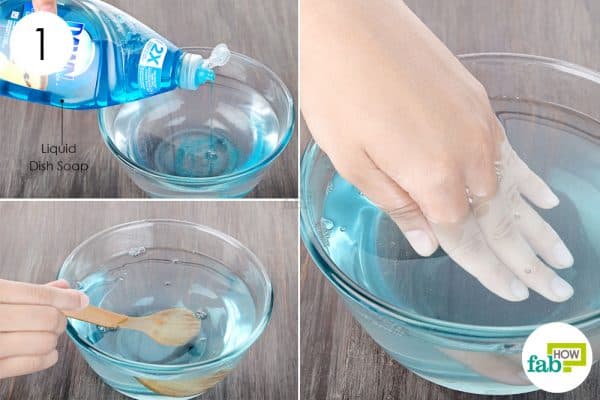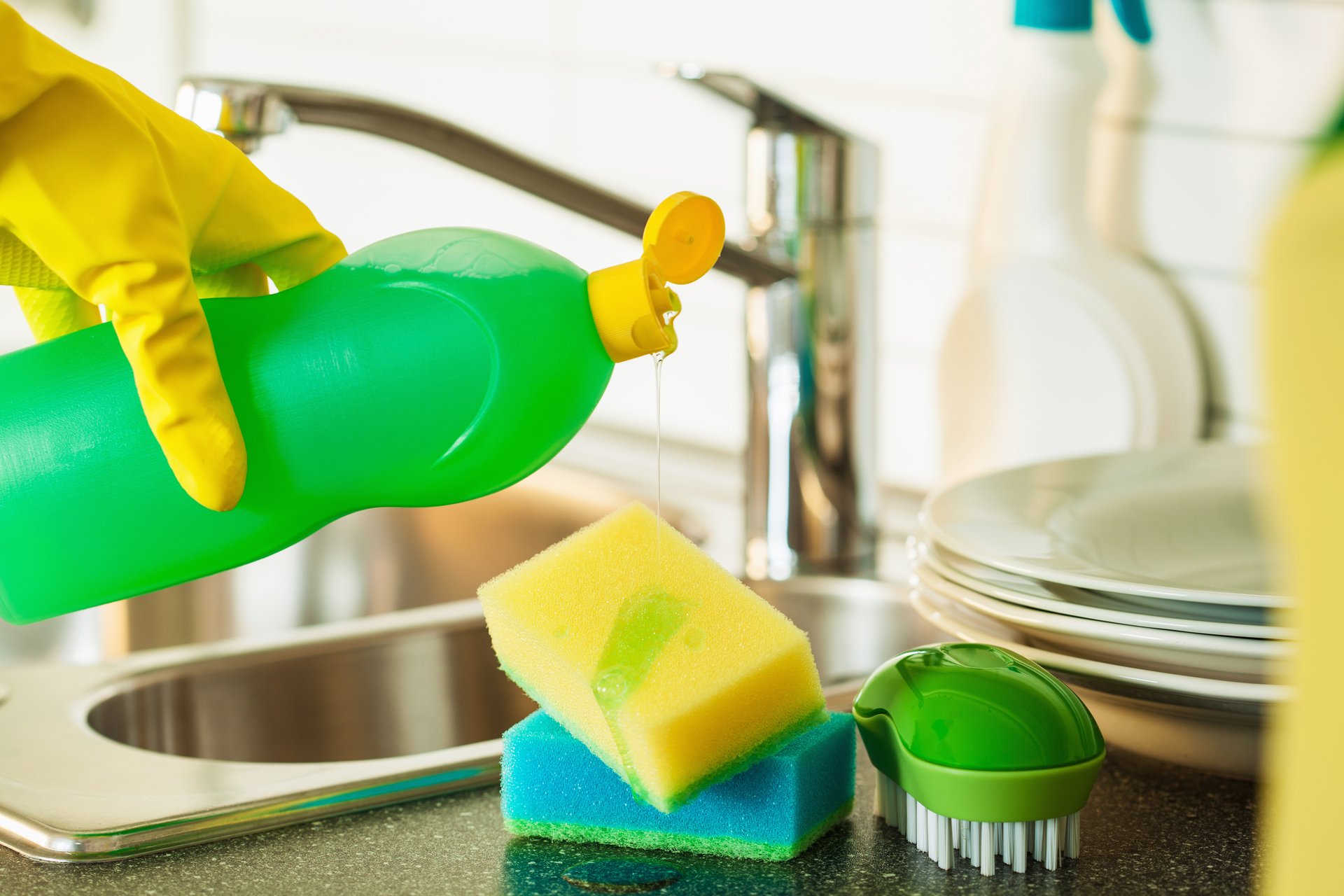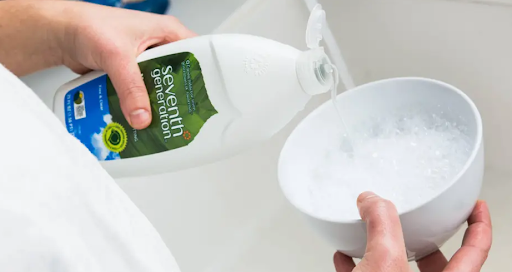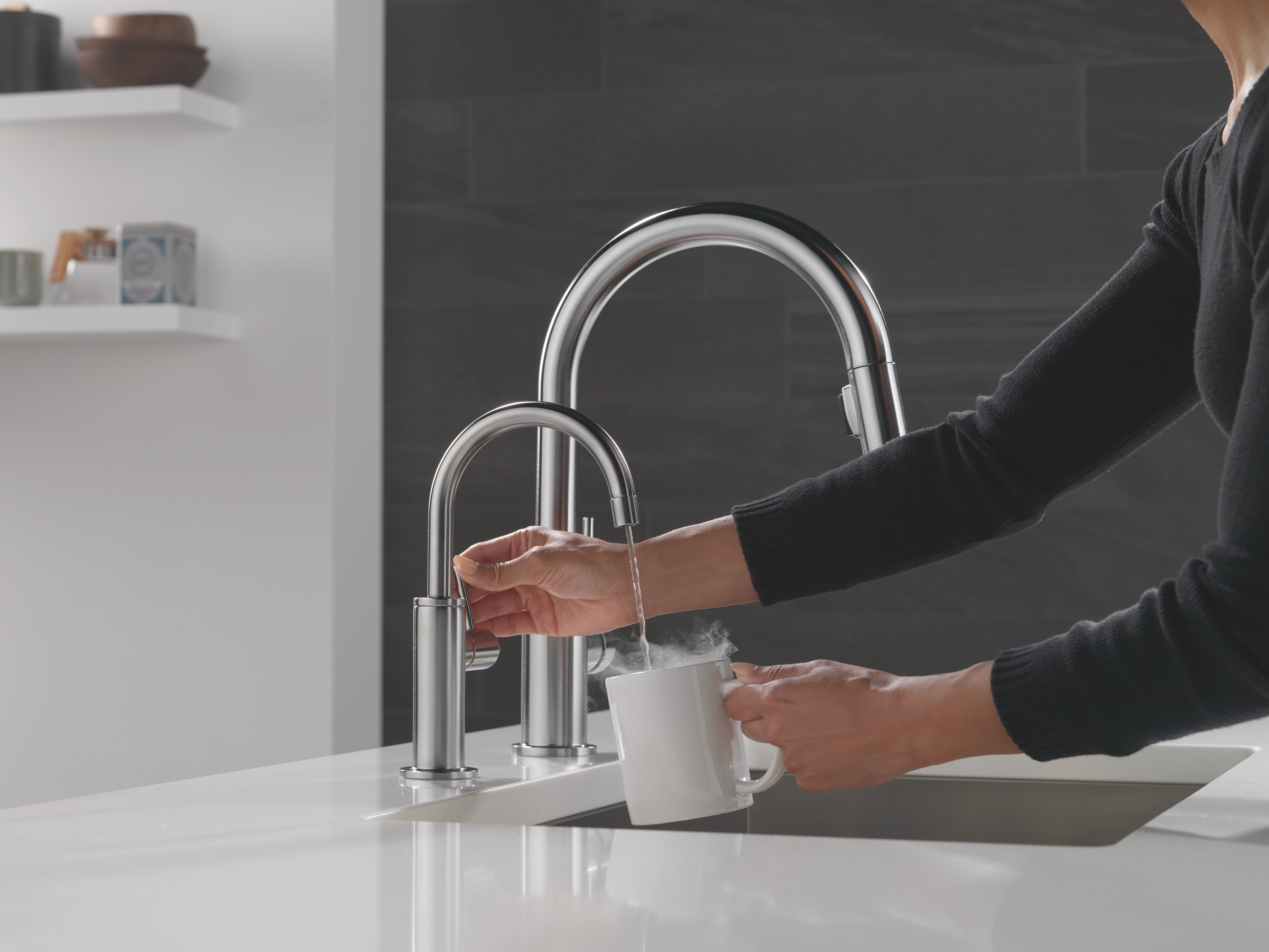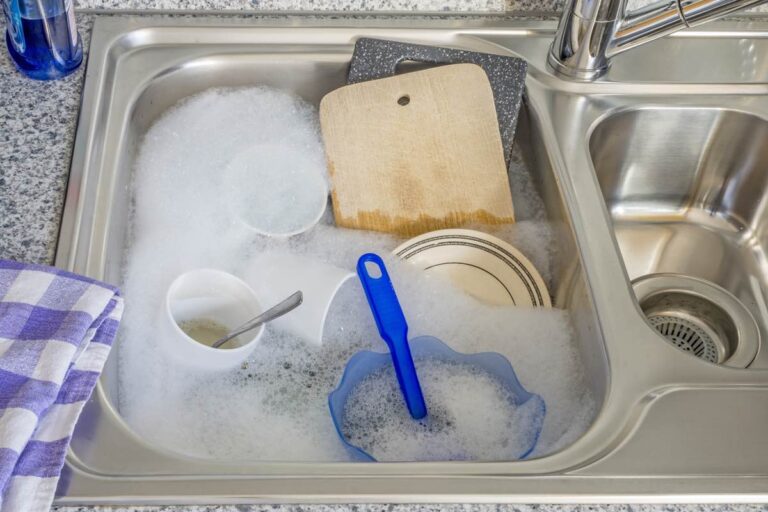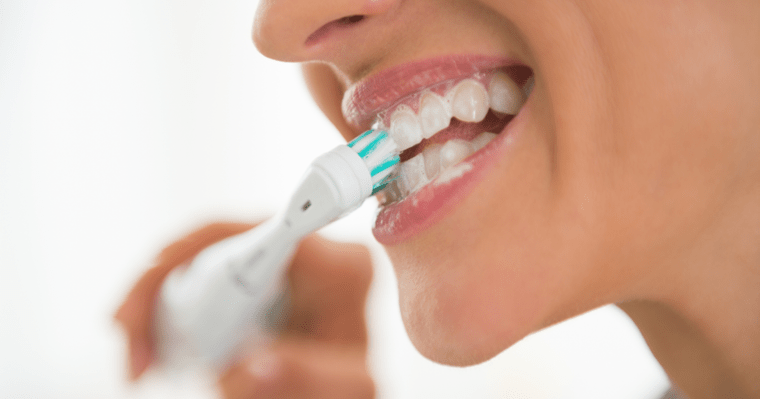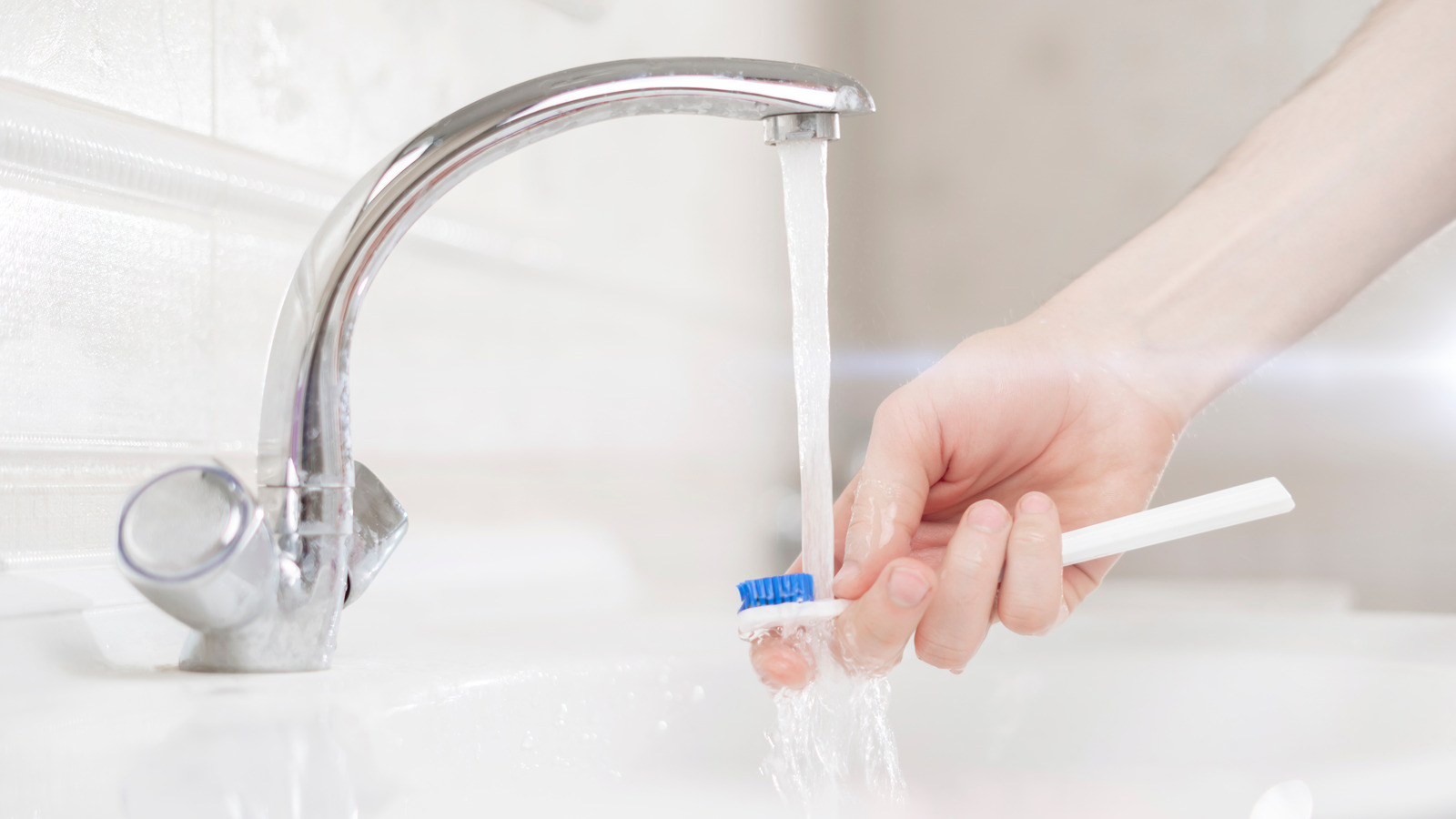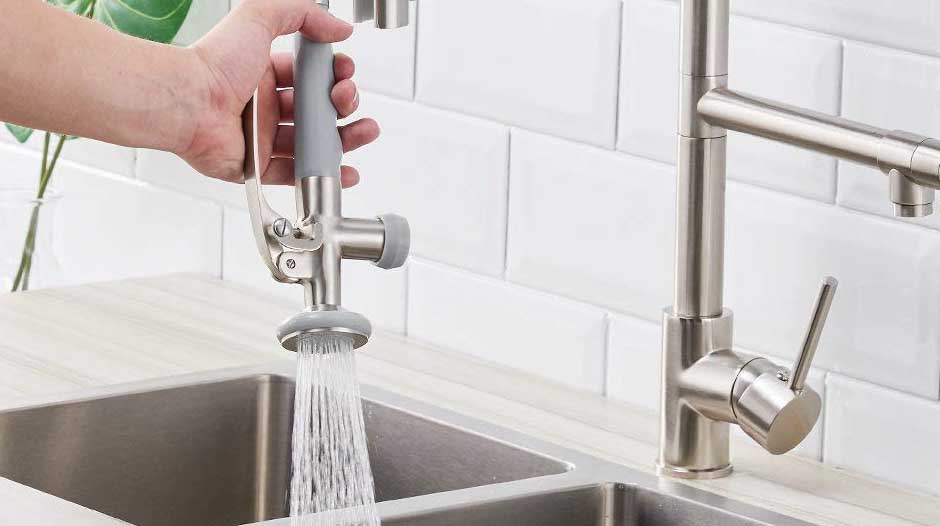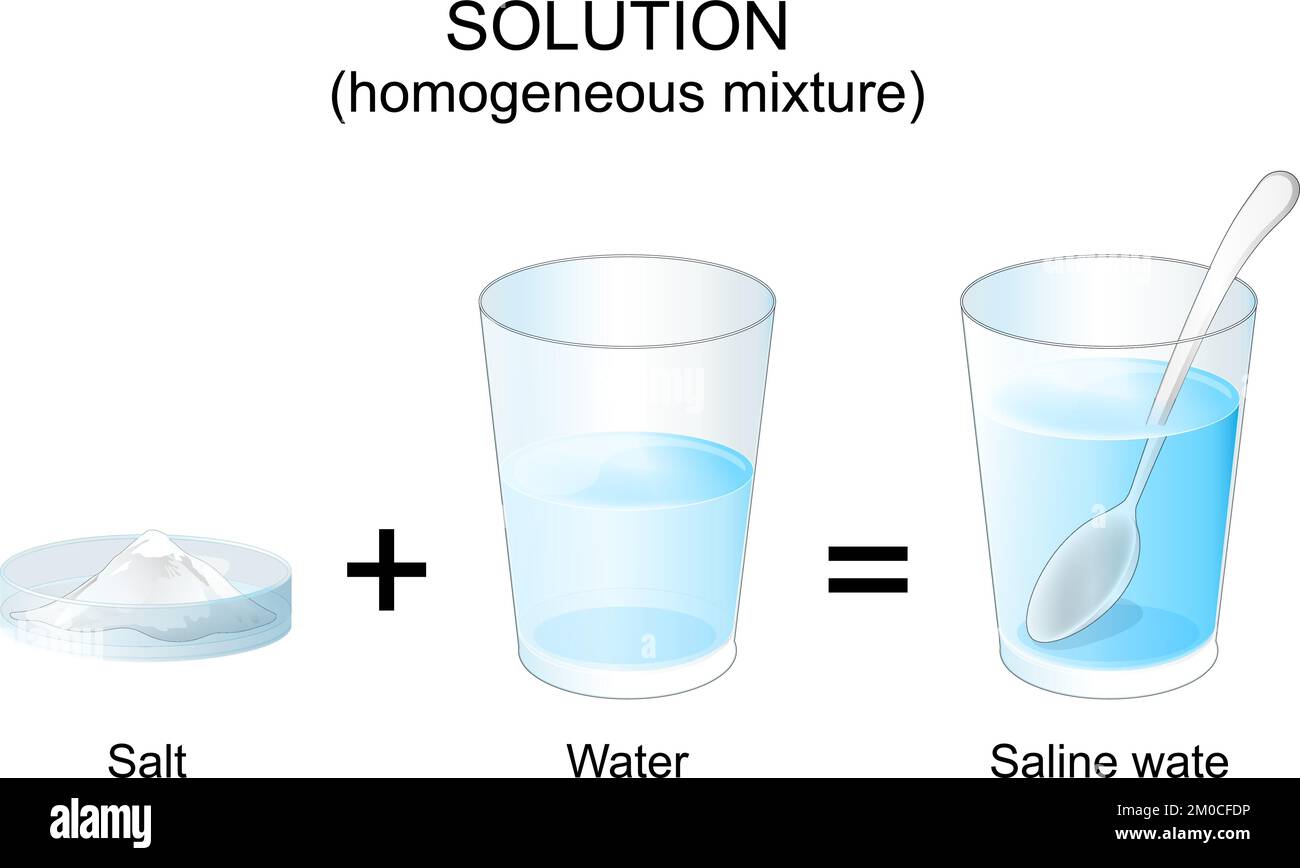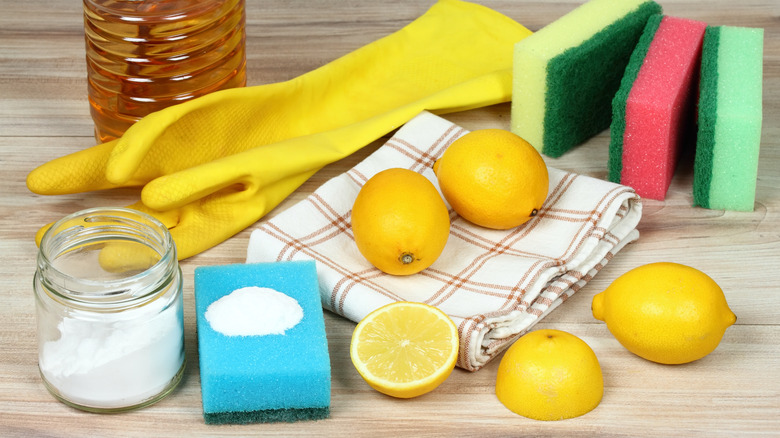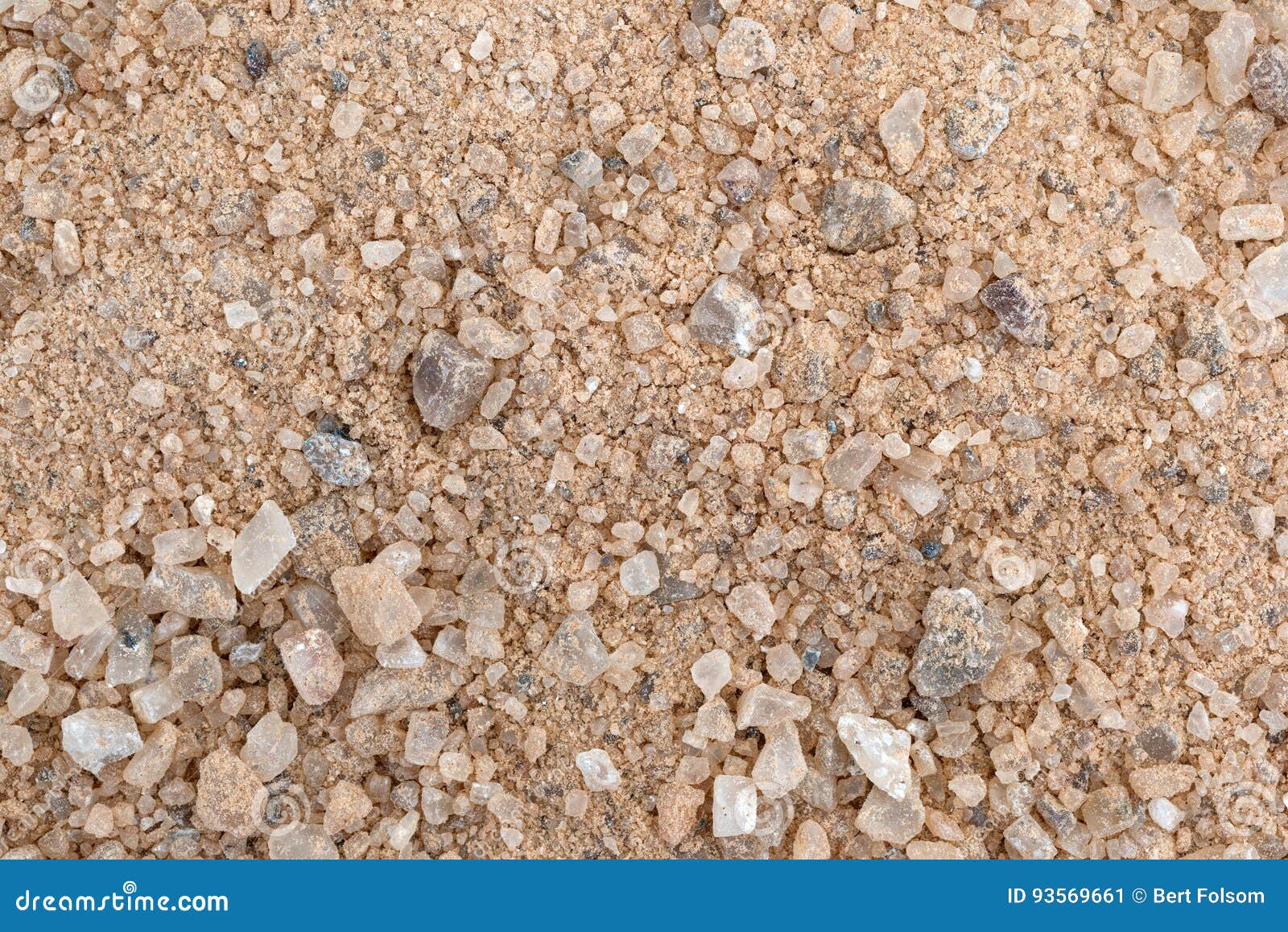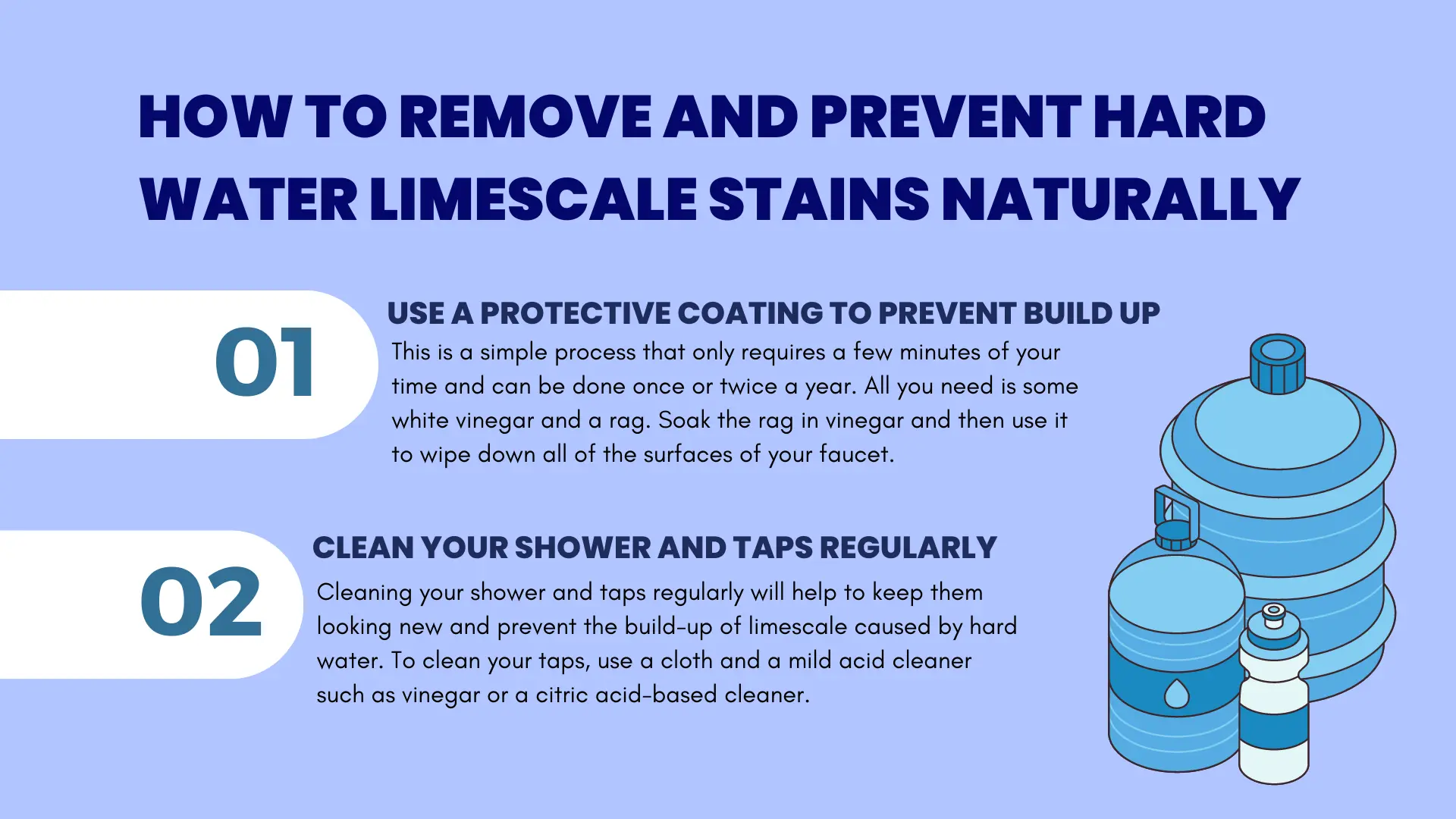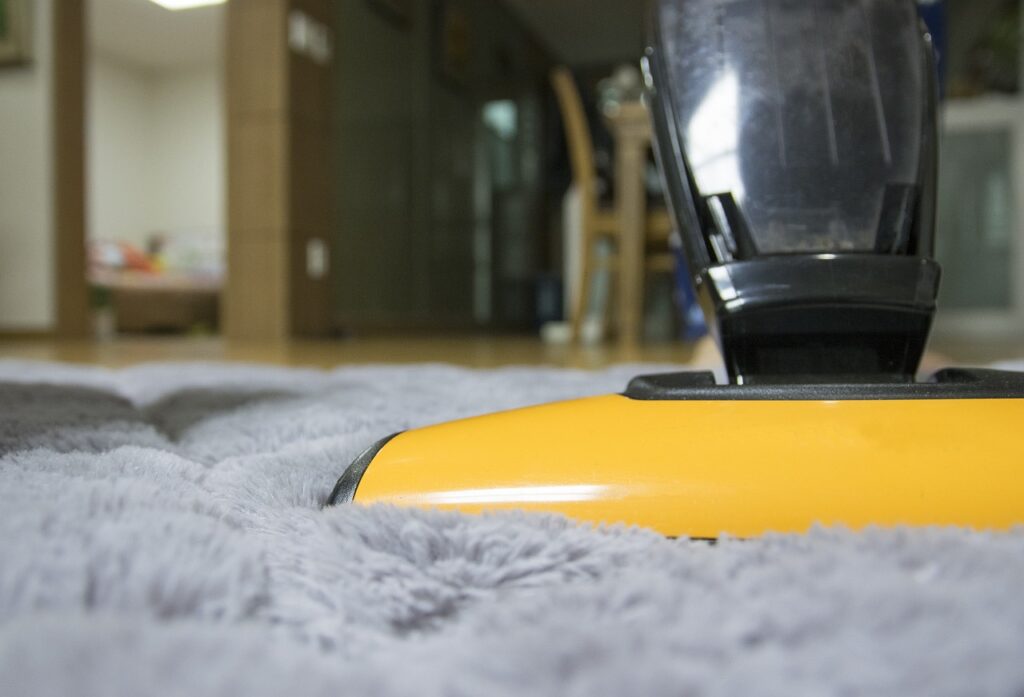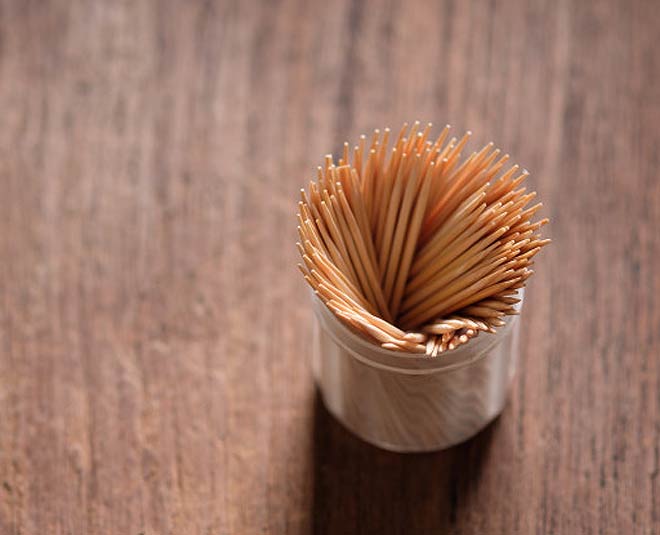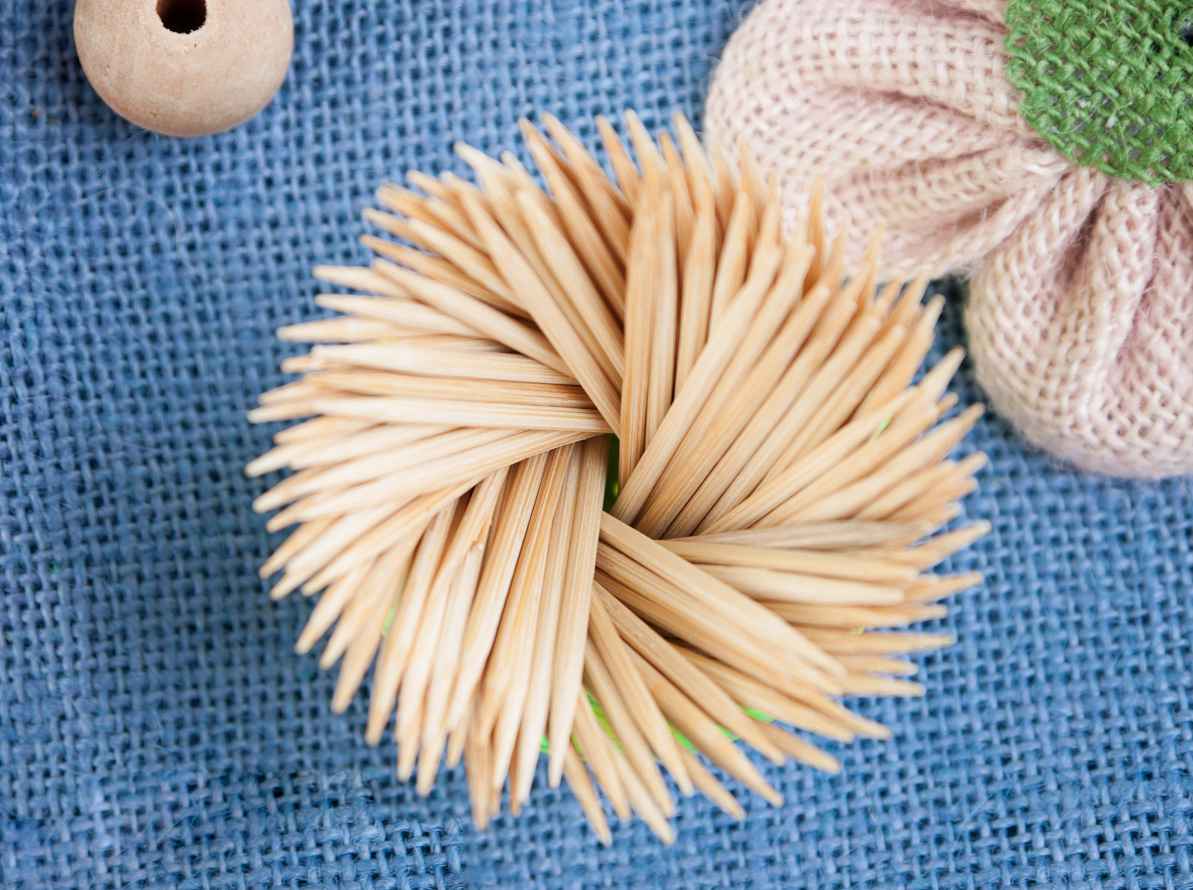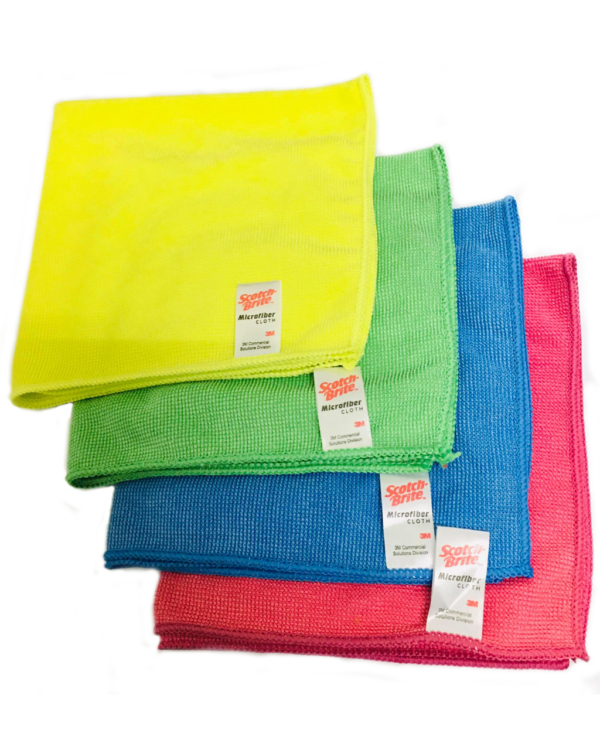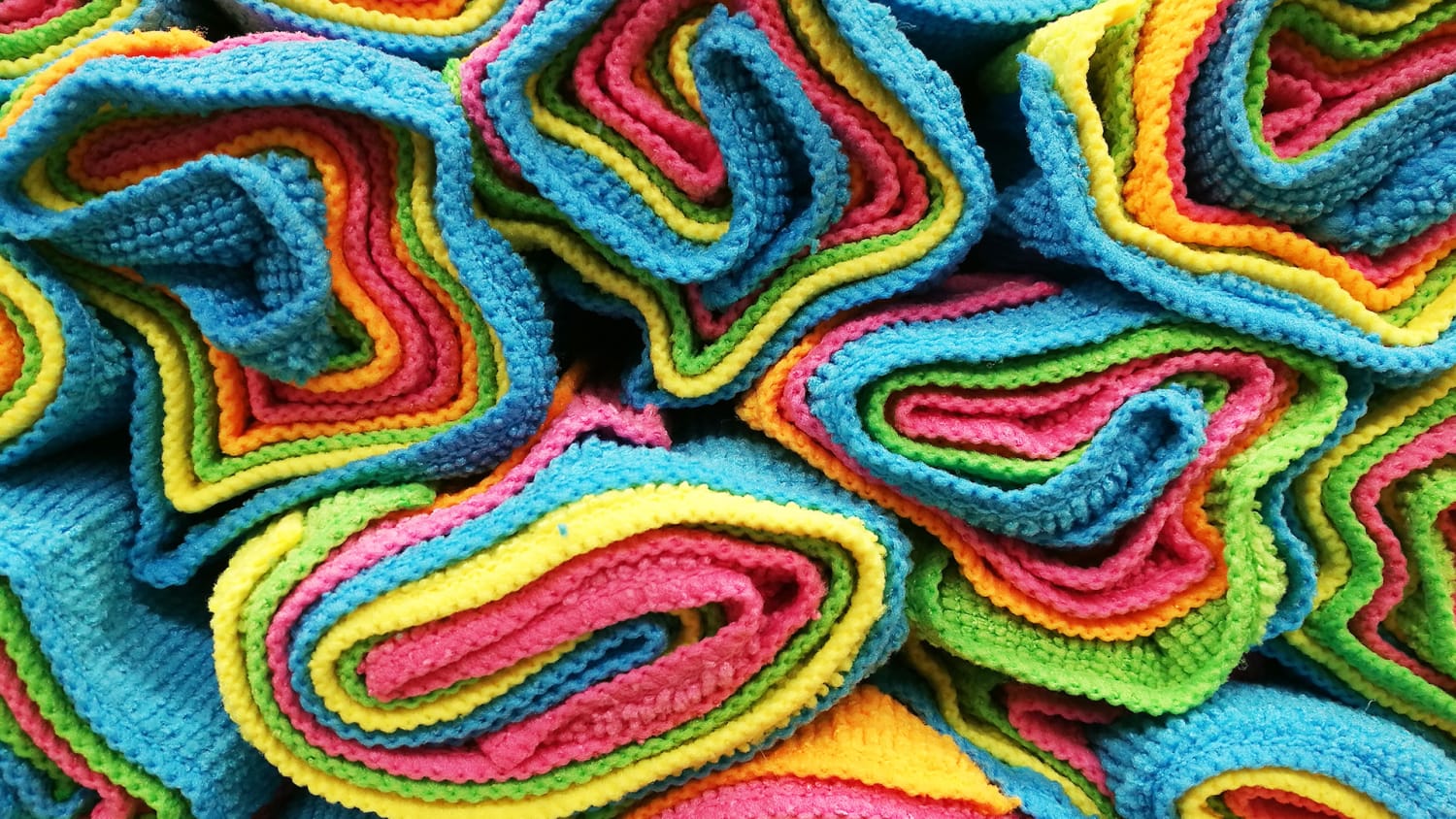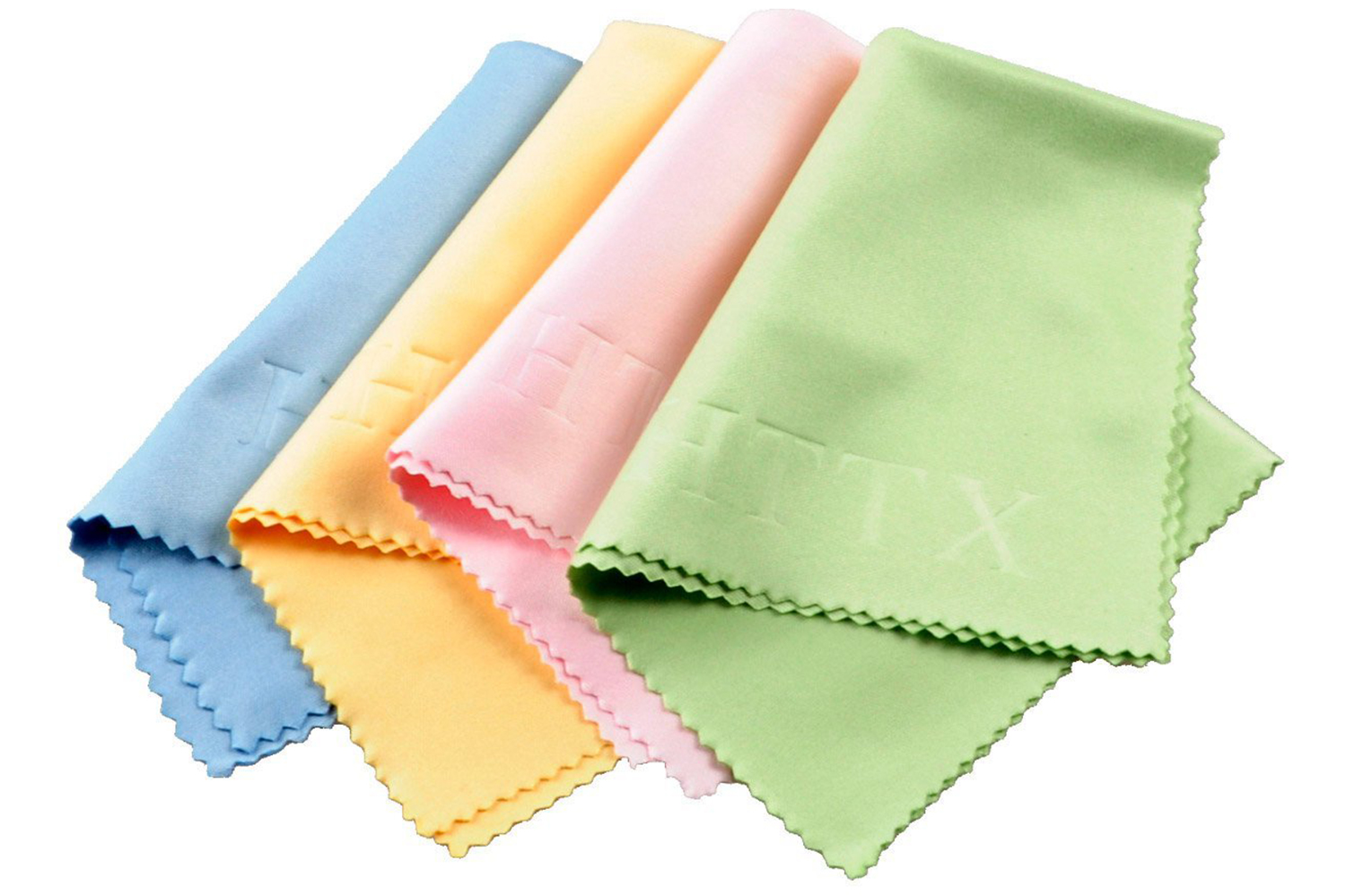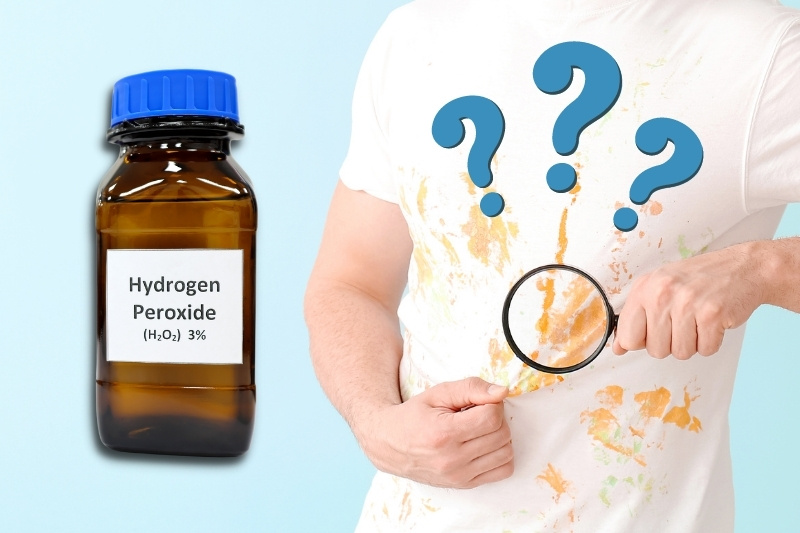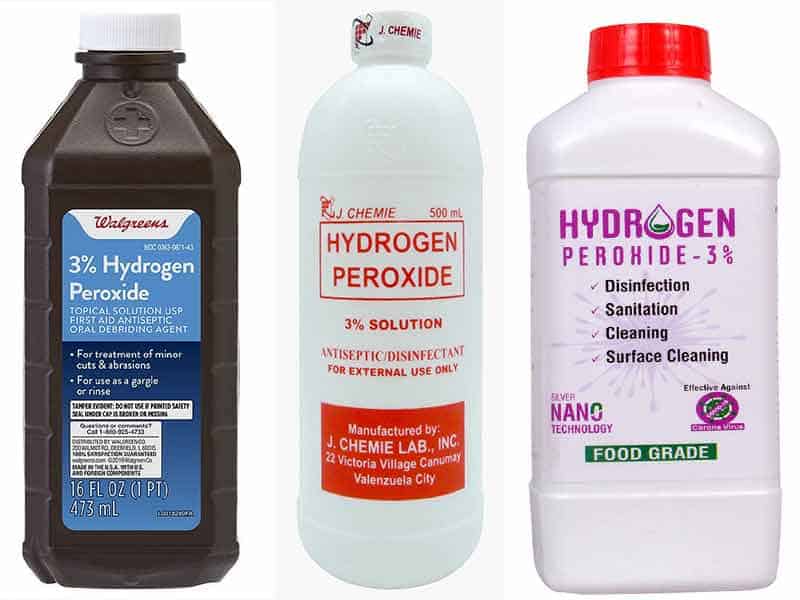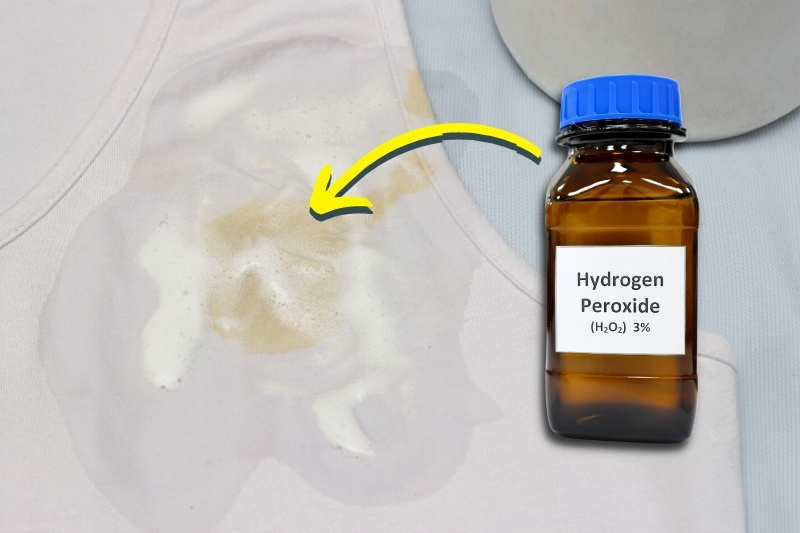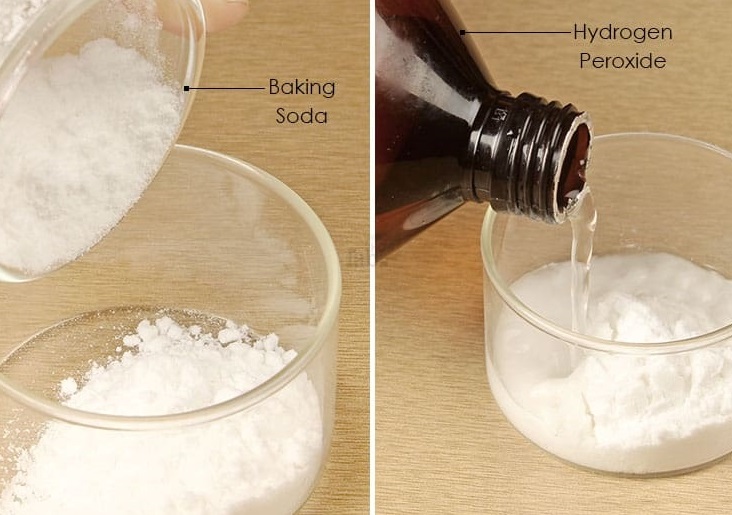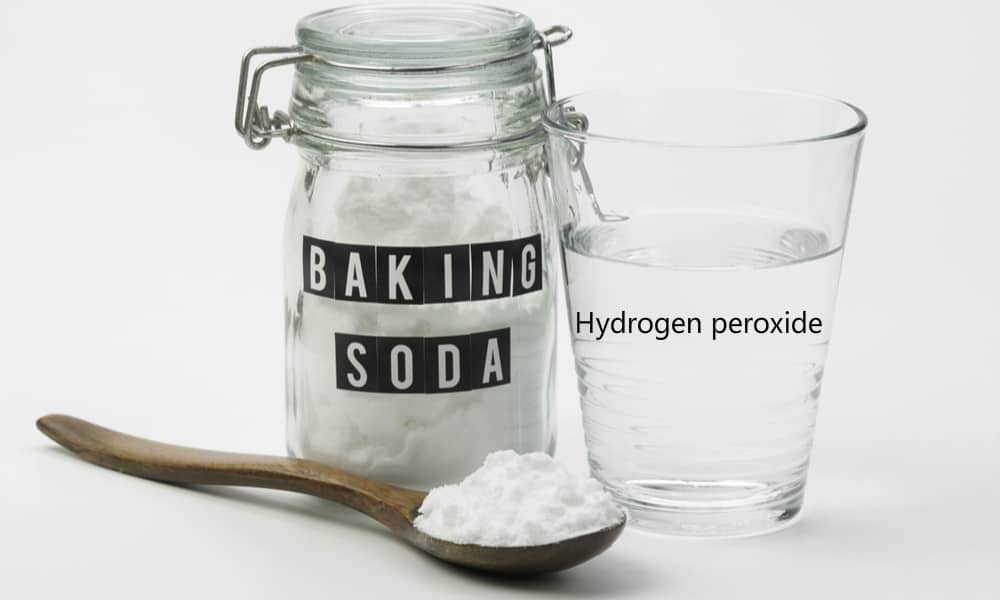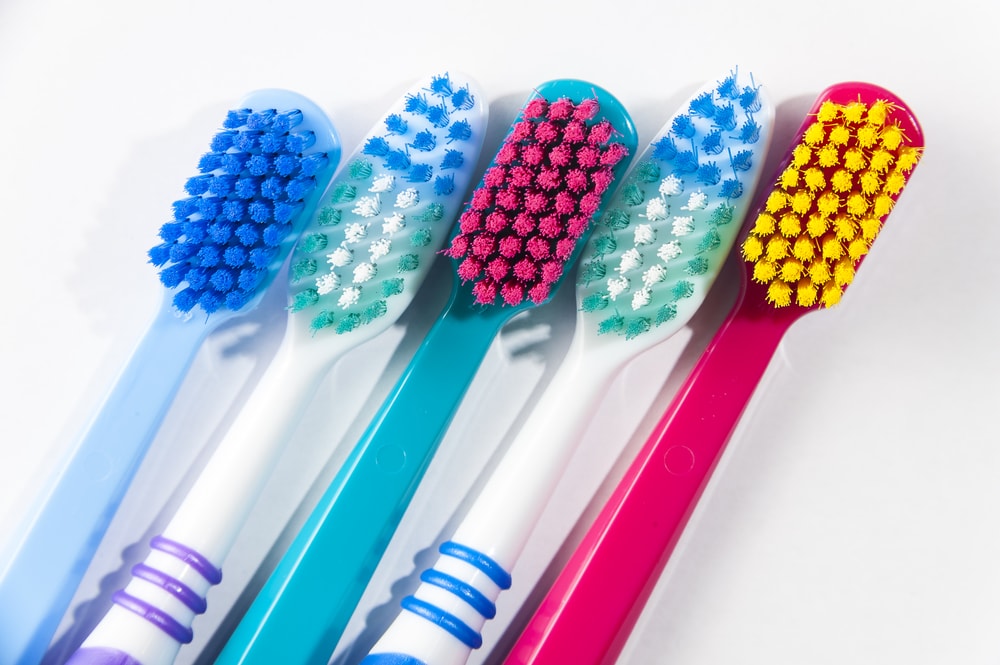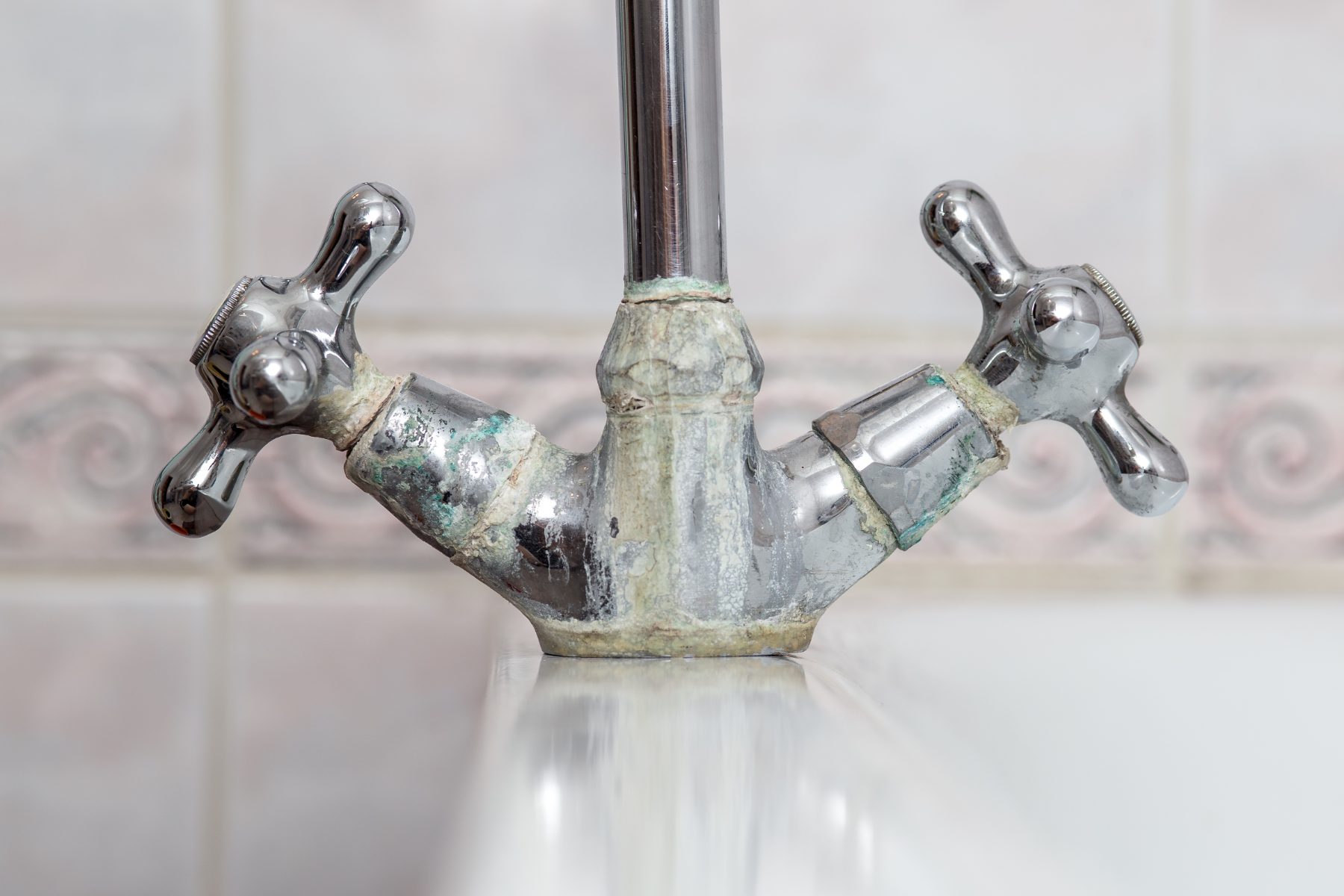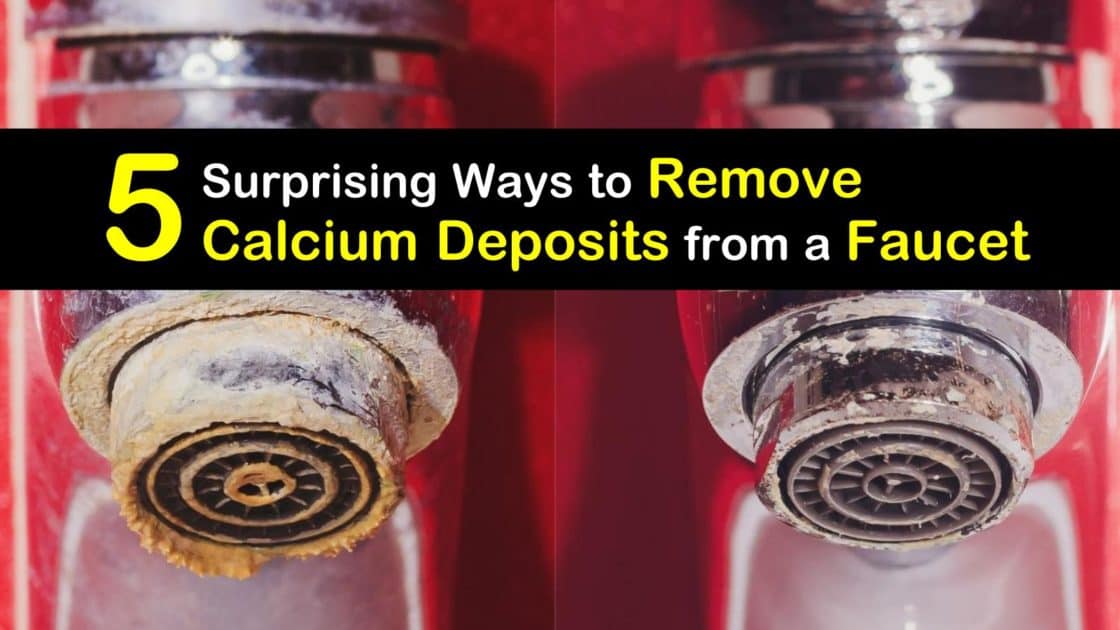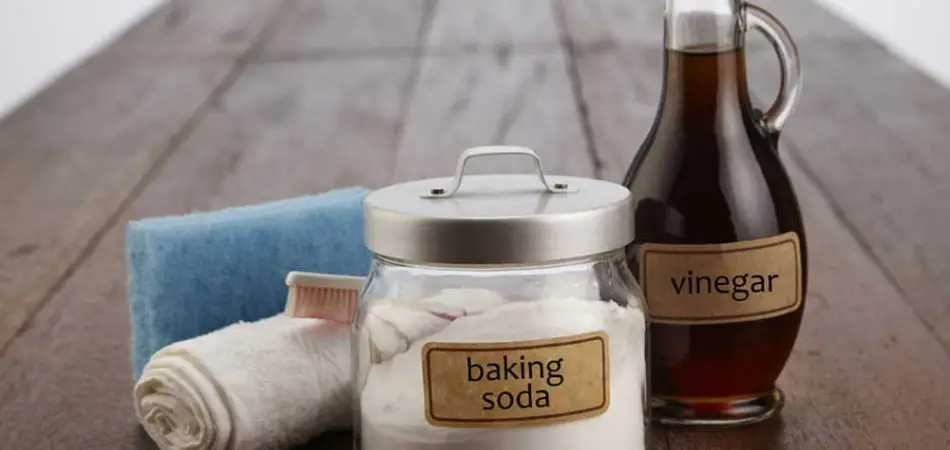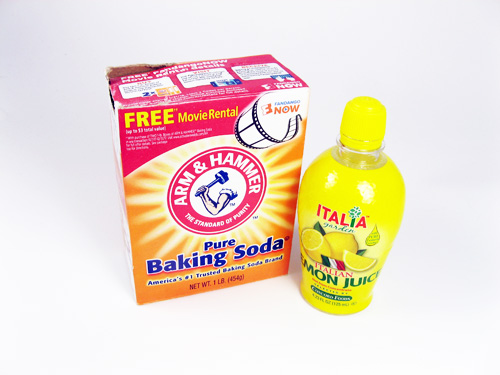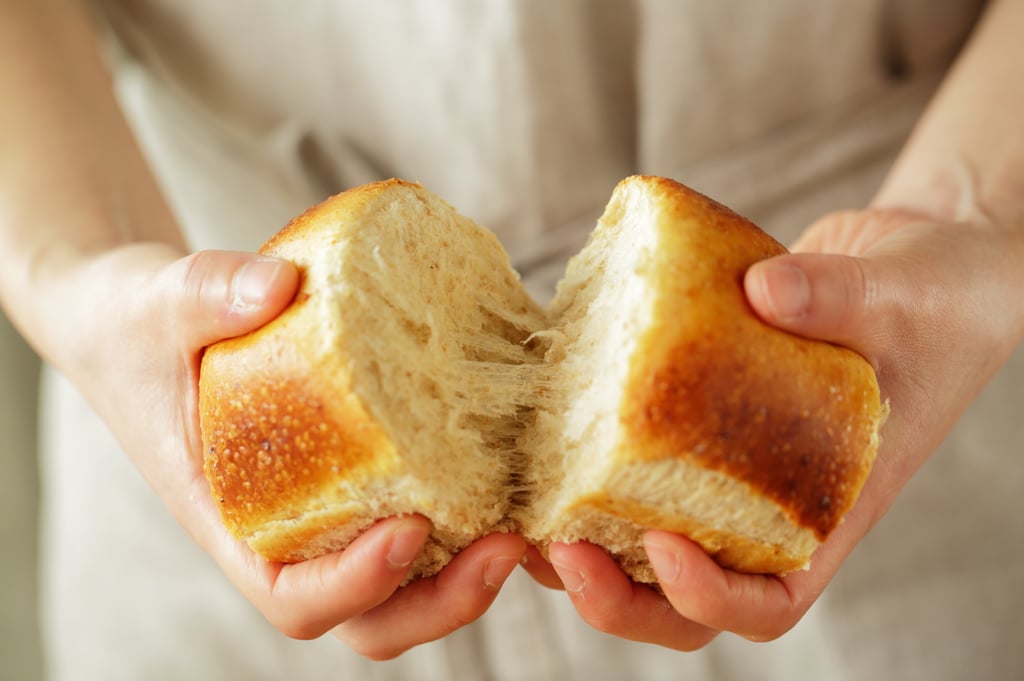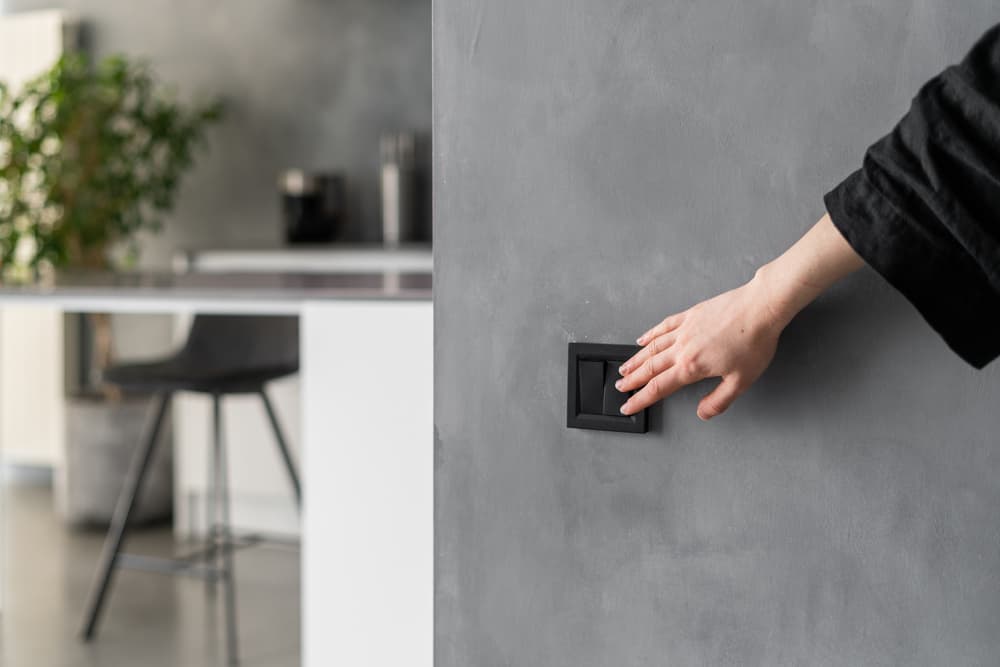The combination of baking soda and vinegar is a powerful and natural cleaning solution that can be used to clean almost anything in your home, including your kitchen sink faucet. This method is not only effective, but also safe for the environment and your health. To use this method, mix equal parts of baking soda and vinegar to form a paste. Apply the paste to your faucet and use a soft cloth or sponge to scrub away any dirt or grime. The baking soda will act as a gentle abrasive, while the vinegar will help to dissolve any tough stains. Once you have scrubbed the entire faucet, rinse it thoroughly with warm water and dry it with a clean cloth. Your kitchen sink faucet will be left sparkling clean and free of any harsh chemicals.1. Use a mixture of baking soda and vinegar to scrub the faucet
If your kitchen sink faucet is covered in stubborn grease or food residue, soaking it in a solution of warm water and dish soap is a great way to loosen and remove the buildup. This method is also gentle on your faucet and will not cause any damage. To use this method, fill a small bowl or bucket with warm water and add a few drops of dish soap. Submerge your faucet in the solution and let it soak for 10-15 minutes. This will give the soap enough time to break down the grease and food particles. After soaking, use a soft cloth or sponge to wipe away any remaining residue. Rinse the faucet with warm water and dry it with a clean cloth. Your faucet will be left clean and shiny.2. Soak the faucet in a solution of warm water and dish soap
When it comes to cleaning your kitchen sink faucet, there are often small crevices and tight spaces that are difficult to reach with a cloth or sponge. In these cases, a toothbrush can be a handy tool to have. Take an old toothbrush and dampen it with warm water. Apply a small amount of dish soap or a cleaning solution of your choice to the bristles and use it to scrub the hard-to-reach areas of your faucet. The bristles will be able to get into tight spaces and remove any dirt or grime. Once you have finished scrubbing, rinse the faucet with warm water and dry it with a clean cloth. Your faucet will be left looking clean and spotless.3. Use a toothbrush to clean hard-to-reach areas
If you are dealing with a tough stain or buildup on your kitchen sink faucet, using a commercial kitchen cleaner that is specifically designed for faucets can be very effective. These cleaners are formulated to remove tough stains and buildup without causing any damage to your faucet. When using a commercial cleaner, always read the instructions carefully and follow the recommended usage. This will ensure the best results and prevent any damage to your faucet. After cleaning with a commercial cleaner, make sure to rinse the faucet thoroughly with warm water and dry it with a clean cloth.4. Use a commercial kitchen cleaner specifically designed for faucets
If your kitchen sink faucet is plagued by hard water stains, a mixture of lemon and salt can be a natural and effective solution. The citric acid in lemons helps to dissolve the mineral deposits that cause hard water stains, while the salt acts as a gentle abrasive to scrub them away. To use this method, cut a lemon in half and sprinkle some salt onto one of the cut sides. Use the salted lemon to scrub your faucet, focusing on any areas with hard water stains. Rinse the faucet with warm water and dry it with a clean cloth. Your faucet will be left sparkling clean and free of any hard water stains after using this method.5. Use a lemon and salt mixture to remove hard water stains
For those hard-to-reach areas of your kitchen sink faucet that are too small for a toothbrush, a toothpick can be a useful tool for removing buildup. The pointed end of a toothpick can fit into small crevices and scrape away any dirt or grime. Gently run the toothpick along the edges and corners of your faucet, being careful not to apply too much pressure and cause any damage. After removing as much buildup as possible, rinse the faucet with warm water and dry it with a clean cloth.6. Use a toothpick to remove buildup in small crevices
After cleaning your kitchen sink faucet, it's important to give it a good polish to make it shine. A microfiber cloth is a great tool for this task as it is soft and non-abrasive, making it safe to use on your faucet. Simply dampen the cloth with warm water and use it to gently polish your faucet. The microfiber cloth will remove any remaining dirt or streaks and leave your faucet sparkling clean.7. Use a microfiber cloth to polish the faucet
If your kitchen sink faucet is stained with tough, stubborn stains, a mixture of hydrogen peroxide and baking soda can be a powerful solution to remove them. Hydrogen peroxide is a natural bleaching agent and baking soda is a gentle abrasive, making them a perfect combination for removing tough stains. To use this method, mix equal parts of hydrogen peroxide and baking soda to form a paste. Apply the paste to your faucet and let it sit for a few minutes. Then, use a soft cloth or sponge to scrub the stain. Rinse the faucet with warm water and dry it with a clean cloth. Your faucet will be left clean and free of any tough stains after using this method.8. Use a mixture of hydrogen peroxide and baking soda to remove tough stains
Mineral deposits from hard water can build up on your kitchen sink faucet over time and leave it looking dull and dirty. To remove these deposits, a toothbrush and white vinegar can be an effective solution. Soak the toothbrush in white vinegar and use it to scrub the areas of your faucet with mineral deposits. The acidity of the vinegar will help to dissolve the deposits and leave your faucet looking clean and shiny. Rinse the faucet with warm water and dry it with a clean cloth.9. Use a toothbrush and white vinegar to remove mineral deposits
If your kitchen sink faucet is affected by rust stains, a mixture of lemon juice and baking soda can help to remove them. The acid in lemon juice helps to dissolve the rust, while the baking soda acts as a gentle abrasive to scrub it away. To use this method, mix equal parts of lemon juice and baking soda to form a paste. Apply the paste to the rust stains on your faucet and let it sit for a few minutes. Then, use a soft cloth or sponge to scrub the stains. Rinse the faucet with warm water and dry it with a clean cloth. Your faucet will be left clean and free of any unsightly rust stains after using this method.10. Use a mixture of lemon juice and baking soda to remove rust stains
Maintaining a Sparkling Clean Kitchen Sink Faucet

The Importance of a Clean Kitchen Sink Faucet
 A kitchen sink faucet plays a crucial role in our daily lives. From washing dishes to filling up pots with water, we rely on it for a variety of tasks. However, with constant use and exposure to water and food particles, a kitchen sink faucet can quickly become dirty and harbor harmful bacteria. That's why it's important to regularly clean and disinfect your faucet to maintain a clean and healthy kitchen environment.
A kitchen sink faucet plays a crucial role in our daily lives. From washing dishes to filling up pots with water, we rely on it for a variety of tasks. However, with constant use and exposure to water and food particles, a kitchen sink faucet can quickly become dirty and harbor harmful bacteria. That's why it's important to regularly clean and disinfect your faucet to maintain a clean and healthy kitchen environment.
Best Practices for Cleaning a Kitchen Sink Faucet
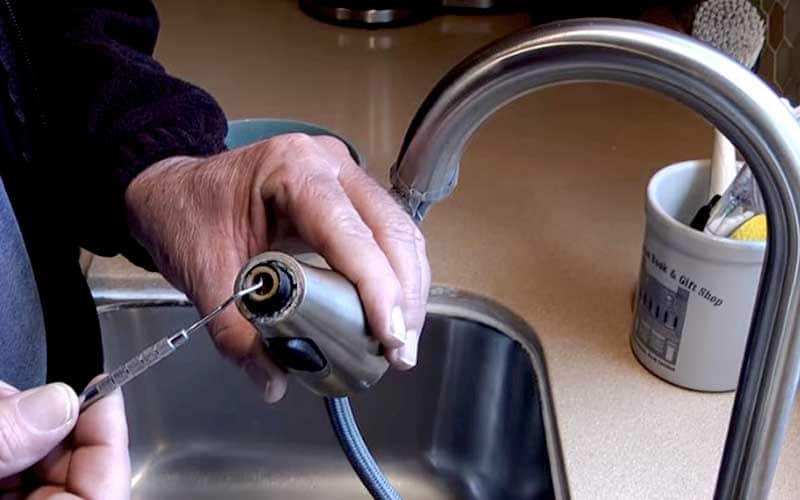 When it comes to cleaning a kitchen sink faucet, there are a few best practices to keep in mind. First, it's important to use
mild cleaning agents
that won't damage the faucet's finish. Avoid using harsh chemicals or abrasive cleaners as they can cause discoloration and scratches. Instead, opt for gentle,
all-natural cleaners
or make your own cleaning solution with ingredients like vinegar and baking soda.
Next, it's crucial to regularly
remove any mineral buildup
on your faucet. Hard water can leave behind deposits that not only make your faucet look dirty but also affect its functionality. To remove mineral buildup, soak a cloth in
white vinegar
and wrap it around the faucet for about an hour. Then, use a toothbrush or scrub brush to gently scrub away the deposits. Rinse with warm water and dry with a clean cloth.
When it comes to cleaning a kitchen sink faucet, there are a few best practices to keep in mind. First, it's important to use
mild cleaning agents
that won't damage the faucet's finish. Avoid using harsh chemicals or abrasive cleaners as they can cause discoloration and scratches. Instead, opt for gentle,
all-natural cleaners
or make your own cleaning solution with ingredients like vinegar and baking soda.
Next, it's crucial to regularly
remove any mineral buildup
on your faucet. Hard water can leave behind deposits that not only make your faucet look dirty but also affect its functionality. To remove mineral buildup, soak a cloth in
white vinegar
and wrap it around the faucet for about an hour. Then, use a toothbrush or scrub brush to gently scrub away the deposits. Rinse with warm water and dry with a clean cloth.
Targeting Those Hard-to-Reach Areas
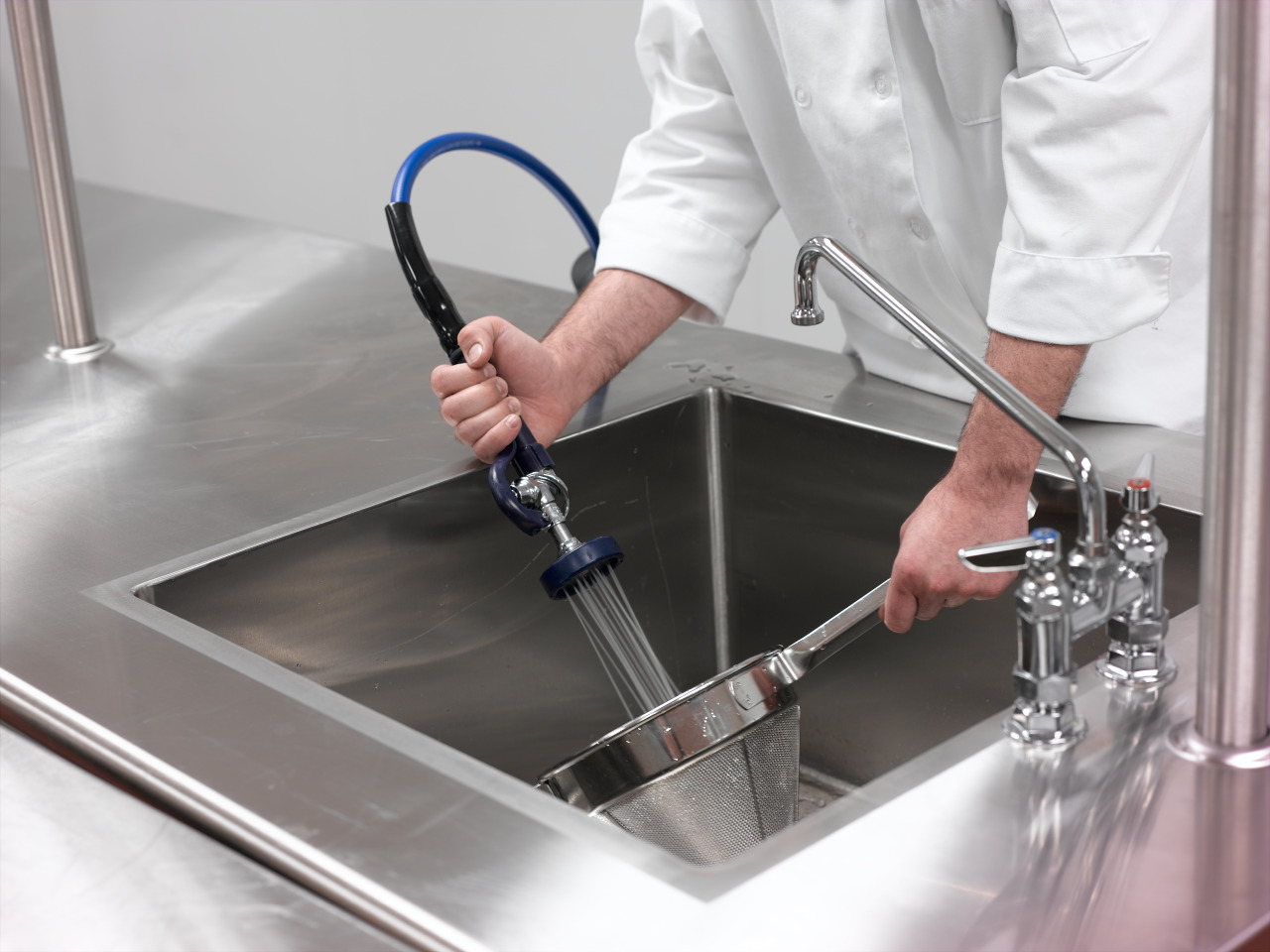 It's easy to clean the visible parts of a kitchen sink faucet, but what about the areas that are hard to reach? The
aerator
and
crevices
around the base of the faucet can quickly accumulate grime and bacteria. To clean these areas, remove the aerator and soak it in a solution of warm water and vinegar. Use a small brush or toothbrush to scrub away any buildup. For crevices, use a cotton swab or toothpick to gently remove any dirt or grime.
It's easy to clean the visible parts of a kitchen sink faucet, but what about the areas that are hard to reach? The
aerator
and
crevices
around the base of the faucet can quickly accumulate grime and bacteria. To clean these areas, remove the aerator and soak it in a solution of warm water and vinegar. Use a small brush or toothbrush to scrub away any buildup. For crevices, use a cotton swab or toothpick to gently remove any dirt or grime.
Regular Maintenance and Preventive Measures
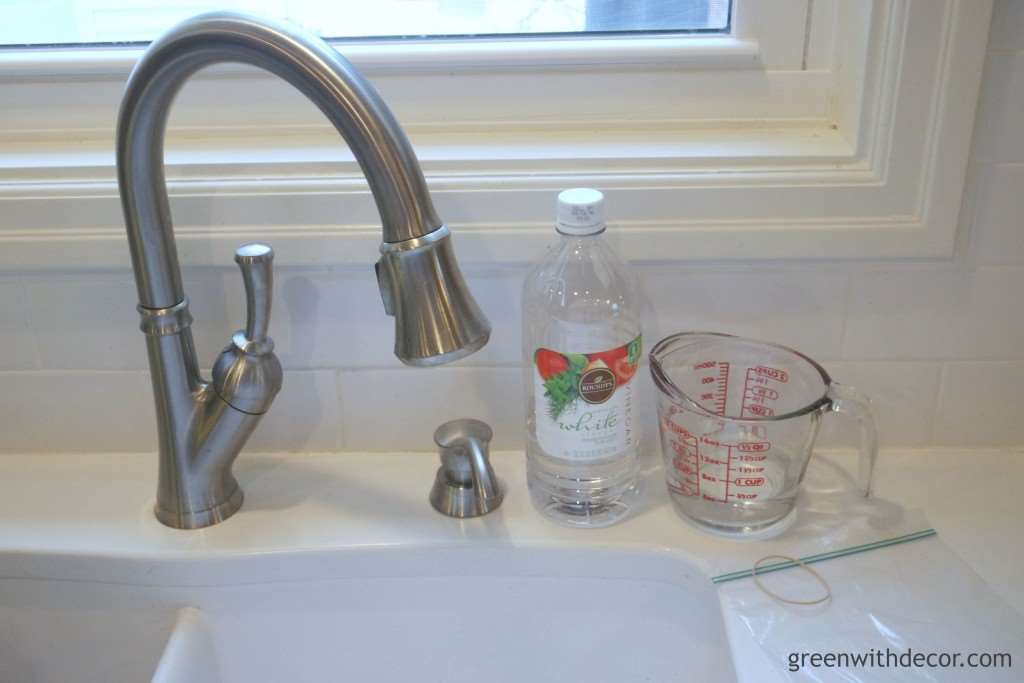 To keep your kitchen sink faucet sparkling clean, it's important to make it a part of your regular cleaning routine. Wipe down the faucet after each use with a clean cloth and rinse with warm water. This will prevent any buildup and keep your faucet looking shiny and new. Additionally, consider installing a
water filtration system
to reduce mineral deposits and improve the overall quality of your water.
In conclusion, a clean kitchen sink faucet is not only visually appealing but also essential for maintaining a hygienic kitchen. By following these best practices and incorporating regular maintenance, you can ensure your faucet remains in top condition for years to come. So next time you're cleaning your kitchen, don't forget to give your faucet some extra attention for a truly sparkling finish.
To keep your kitchen sink faucet sparkling clean, it's important to make it a part of your regular cleaning routine. Wipe down the faucet after each use with a clean cloth and rinse with warm water. This will prevent any buildup and keep your faucet looking shiny and new. Additionally, consider installing a
water filtration system
to reduce mineral deposits and improve the overall quality of your water.
In conclusion, a clean kitchen sink faucet is not only visually appealing but also essential for maintaining a hygienic kitchen. By following these best practices and incorporating regular maintenance, you can ensure your faucet remains in top condition for years to come. So next time you're cleaning your kitchen, don't forget to give your faucet some extra attention for a truly sparkling finish.





